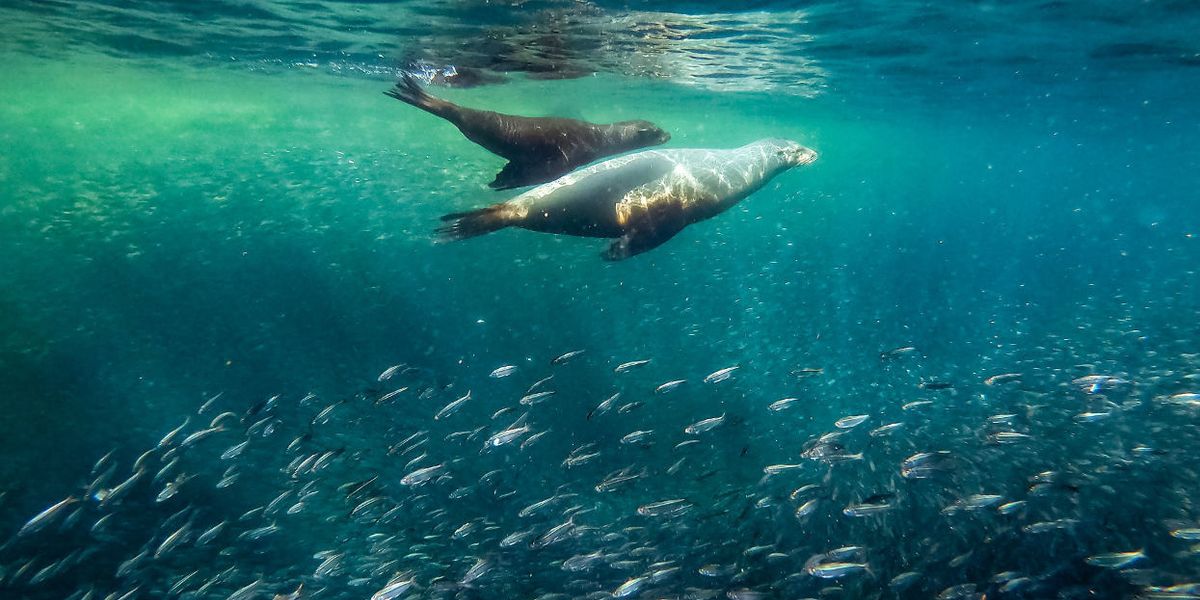
Peter Dykstra: The potential of ocean protection
Under assault from climate change, acidification, and a plastics barrage, the oceans get a boost from the marine reserve movement.
For a guy who's been fascinated with nature all my life, I've been to a paltry number of national parks. My suitcase has no stickers for Yellowstone, Yosemite, or the Grand Canyon.
But I really enjoy the idea that such places exist – maybe someday for me, but for millions of others, now and forever.
The historic push to create America's national parks more than a century ago has no equal. But it has a strong echo in the current-day push for marine reserves – the world's saltwater Yellowstones.
Marine protected areas or sanctuaries have been established or proposed in ocean areas around the globe. From the Indian Ocean to Antarctica's Ross Sea and atolls throughout the Pacific, these marine parks are designed as a bulwark against growing exploitation from fishing, undersea mining, and more.
They protect corals, marine mammals, spawning grounds, and fish species that are under assault because they are particularly lovely, or particularly tasty.
Pitcairn Island, the remote South Pacific isle best known as the refuge for the real-life mutineers from the HMS Bounty, has created a massive Marine Protected Area (MPA) around its shores.
The U.K. established one around the Chagos Archipelago in the Indian Ocean; and Chile did the same around Easter Island, famed for its massive stone sculptures.
An internationally-shared area in the Ross Sea is one of the most recent targets. With fisheries in more temperate waters showing signs of stress, the relatively untouched seas around Antarctica are bracing for an influx of fishing fleets. One potentially prized target: Patagonian toothfish, better known by its upscale menu name, Chilean sea bass.
So much ocean, too few cops
For a moment, let's imagine that 80,000 miles of Texas interstate and U.S. highways, state and local roads, and rural farm roads are the responsibility of the Texas Highway Patrol, and that the THP has one, single, lonely patrol car.
That will give you an idea of what the Republic of Palau was up against, with its near-Texas-sized marine sanctuary and one patrol boat.
Twenty percent of Palau's near-shore waters surrounding its 250 islands in the western Pacific are reserved for domestic fishing. The outlying 80 percent is a no-take zone for any fishermen.
Eco-tourism, particularly diving on Palau's many coral reefs, is an economic staple, and is a major economic incentive for the sanctuary. Critics have said that well-heeled tourists, rather than Palauans, are the main beneficiaries of the sanctuary law.
Contributions from non-government groups have bolstered the one-ship Palauan Navy's efforts to enforce the fishing ban. Satellite surveillance led to a spectacular, headline-grabbing bust of a 15-boat Vietnamese pirate fishing fleet in 2015.
Palau torched four of the captured boats to send a "keep-out" message to other prospective pirates. It sent 77 sailors back to Vietnam on the boats they rode in on.
The other areas, like Chagos and an Australian reserve in the Coral Sea, have faced similar charges of elitism.
So did Yellowstone in the 1870's, and recently, as neighboring ranchers see the reintroduction of gray wolves and bison as a menace. A proposal for New Zealand'sKermadec Islands was shelved by prime Minister Jacinda Ardern after complaints from Maori natives over the loss of commercial fishing rights. Australia's vast Coral Sea Marine Park overcame harsh resistance by cutting deals with recreational fishing guides.
The biggest U.S. triumph to date is the Papahānaumokuākea Marine National Monument, covering the chain of uninhabited islands that stretch a thousand miles to the northwest of Hawaii.
While history will remember President George W. Bush as having a poor environmental track record, marine sanctuaries were an exception. He created Papahānaumokuākea in 2006, and President Obama enlarged its footprint in 2016.
As conservation measures, marine reserves look good now. There's every chance that, a century from now, they'll look like we've added some wisdom to our oceans, and not just plastic, acid and icemelt.
Editor's note: For two years prior to joining EHN/Daily Climate, Peter Dykstra worked for the Pew Charitable Trusts, which promotes and funds marine reserves.













